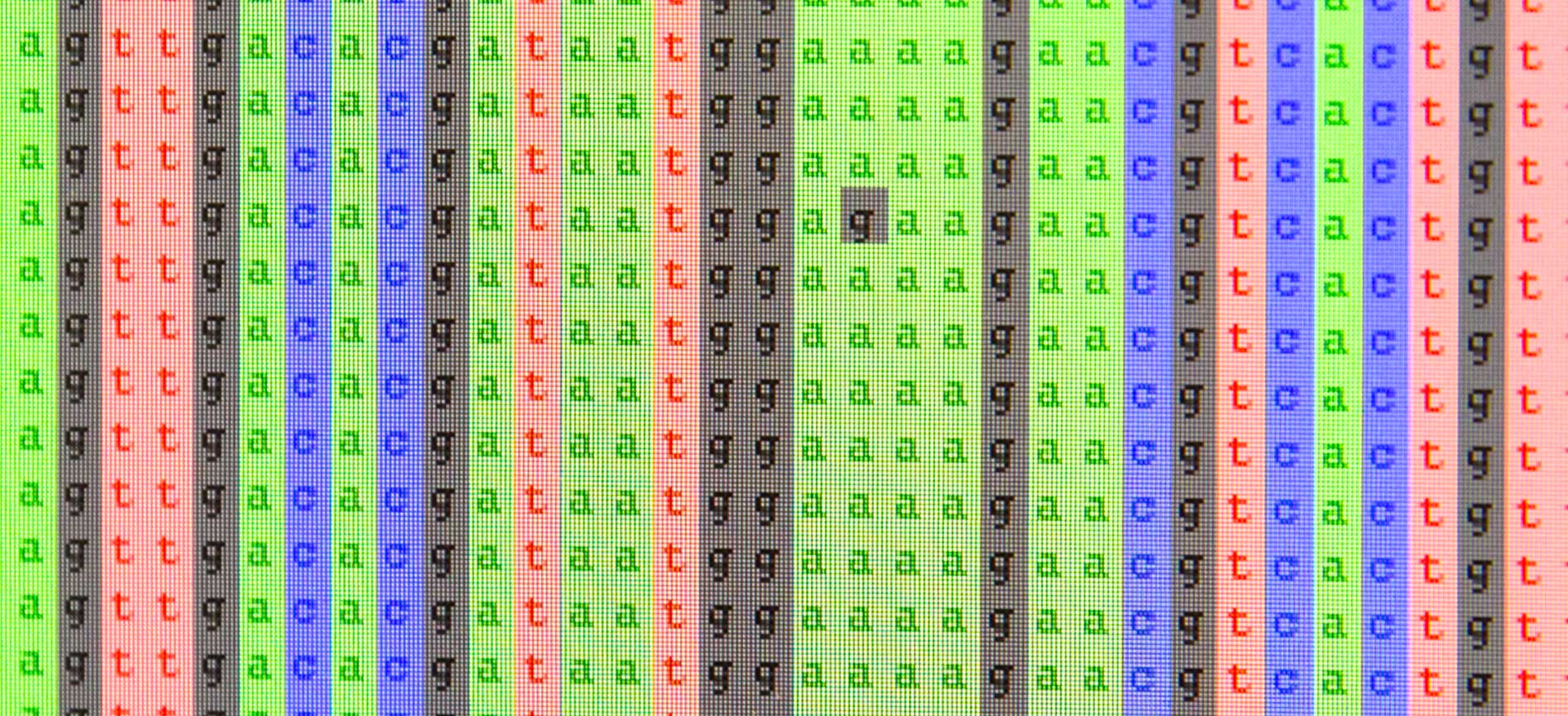
About viruses, poultry and humans
How epidemiologist Claire Guinat draws from the genes of the avian influenza viruses the secret of their spread, how this helps to more efficiently fight the disease and why this knowledge also benefits the health of people and animals.
This story ends with poultry and humans. It starts with two avian influenza viruses. They are called H5N8 and H7N9 and have made epidemics history. The H5N8 virus was introduced to Europe by migratory wild birds where they infected poultry farms and caused destructive epidemic waves of avian influenza. It fell especially heavy on Europe in the winters 2016 and 2020 when millions of poultry had to be killed in hundreds of holdings in order to control the epidemic. So far, humans have hardly ever been infected by the H5N8 virus. It is different with the H7N9 virus that spreads among poultry primarily in China. Since 2013, reports from China tell of H7N9 virus transmissions to humans who then become severely ill. What are the strategies that prevent or at least quickly contain the epidemics of these avian influenza viruses? «The key objective is to understand the transmission dynamics of these viruses,» says the young veterinary epidemiologist Claire Guinat when we meet with her at the Department of Biosystems Science and Engineering (D-BSSE) of ETH Zurich in Basel.
Research between Basel and Toulouse
Already after her first year of studies at the Ecole Nationale Vétérinaire de Toulouse (ENVT) the veterinary student had developed a passion for research in animal health: «I wanted to become a researcher and I was interested in infectious diseases in livestock such as chickens, pigs and cattle; I wanted to know how they come to spread and how they can be fought,» tells us the vivacious Frenchwoman as we sit in the coffee room of the Computational Evolution group (cEvo) in which she is currently working as a Marie Skłodowska-Curie Fellow. Consequently, she first specialised in epidemiology of animal infectious diseases during her Master’s studies. Then, she did her PhD thesis at the Royal Veterinary College (RVC) in London, jointly with The Pirbright Institute, about the transmission of the African swine fever virus. Finally, in 2016, she took up a postdoctoral position at the ENVT in Toulouse and the French National Research Institute for Agriculture, Food and Environment (INRAE). It was the time of the great avian influenza epidemic in Europe and Claire Guinat experienced the epidemic effects at first hand due to her contacts with poultry farmers and her research projects. By analysing epidemiological data such as locations of the infected farms, time of disease outbreak, number of animals per farm etc. she tried to disentangle how the disease was spreading. More specifically, by means of mathematical modelling, she investigated the factors that were driving the spread of the disease between poultry farms. «Back then and in the years to follow, my research was based on traditional epidemiological approaches. However, I wanted to expand my scientific skills and learn how to combine epidemiological data with genetic data in order to obtain more precise analyses. This is why I signed up for the ‘Taming the Beast’ 2018 workshop, delivered annually by Tanja Stadler’s cEvo group,» Claire Guinat tells us.
«Already after my first year
of studies I knew:
‹I wanted to become
a researcher.›»
Tanja Stadler, Professor for Computational Evolution at ETH Zurich, is renowned for her works on phylogenetics and phylodynamics, two key fields of modern biology. With the help of phylogenetics, the evolutionary relations of organisms can be reconstructed just like a genealogical tree. The dynamics taking place in these relations are revealed by phylodynamics, which are based on sophisticated mathematical modelling. During the one-week workshop, Tanja Stadler and her team teach young researchers how to implement these approaches into their own genes data sets and thus gain new information. At the end of this workshop, Claire Guinat was hooked: she wanted to study these new methodologies that had been almost unknown in the field of animal health up to then and apply them to her own research projects. She asked Tanja Stadler whether she could acquire this expertise by means of a project with her group in Basel and Tanja Stadler promised her full support. Back in Toulouse, Claire Guinat immediately started to draft the proposal for her research project DIGDEEP. By using phylodynamics approaches, the genetic data of the two H5N8 and H7N9 avian influenza viruses that spread in Europe and Asia between 2013 and 2017 should be analysed and combined with the epidemiological data in order to gain new insights concerning the transmission mechanisms. From there, novel strategies and measures for the prevention and control of future animal diseases could be developed. Claire Guinat applied for a Marie Skłodowska-Curie Actions Individual Fellowship and her project was approved.
«I wanted to learn
how to combine
epidemiological data
with genetic data.»
In September 2020, Claire Guinat started her project as a Marie Skłodowska-Curie Fellow in Tanja Stadler’s Computational Evolution group at the Department of Biosystems Science and Engineering (D-BSSE) of ETH Zurich in Basel. Ever since, she has been commuting between Basel and Toulouse, as the ENVT is a partner institution of the project. «Here in Basel, I am learning how to quantify the transmission of viruses by means of phylodynamical tools. My colleagues are showing me how the phylodynamic models work, the mathematics behind it, the possibilities these tools are offering, how to apply them and how I can adapt them to my specific questions. In Toulouse, I am learning all about avian influenza viruses, their structure, mutations, the transmission mechanisms,» she tells us.
Quantifying the transmission dynamics
Throughout the course of a pandemic such as avian influenza, the virus mutates again and again within a short amount of time so that for poultry farm Z, which is the last one to become infected, the detected virus is a version that has mutated multiple times compared to the version first detected in poultry farm A that started the infectious spread. The various «virus generations» can be located and distinguished by sequencing the genomes of virus samples collected in the infected farms. The epidemiological data reveals the time and place of the disease’s origin; hence, the mutations of the virus over the course of time can be traced back. With this information, a phylogenetic tree of the virus samples can be sketched. It is similar to a family tree depicting the ancestor and the successive generations, showing who is related to whom and how. However, the phylogenetic tree does not only show how different the virus samples are but gives an overall picture of the transmission process of the epidemic. As the virus mutates according to specific evolutionary patterns, the tree can also be used to infer virus lineages for which no samples were collected. In other words, this means that the tree can be used to infer the number of infected farms that could have been undetected during the epidemic (thus, for which no samples were collected). Yet, this is merely the first step of the analysis. During the second step, phylodynamics help to calculate and quantify the parameters that are decisive for the transmission dynamics of an epidemic. Claire Guinat describes this as follows: «With this, we can for example say that the epidemic was mainly driven by local farm-to-farm infections rather than by wild birds. Prevention and control strategies can be derived from these insights.»
Phylogenetics and phylodynamics as key tools
Claire Guinat leads us to her workplace where she shows us how working on her project looks like. During the first months of her fellowship, she collected thousands of genome sequencing data of H5N8 and H7N9 that had been recorded by research institutions in Europe and Asia during the epidemics. The screen of her laptop lists hundreds of lines. Each line represents a genome sequence of H5N8 or H7N9 and contains details about location and date of sampling.
«My dream is to one day
lead an international
research group of
my own.»
Each sequence consists of a series of letters, also called nucleotides. All sequences are aligned such that similar nucleotides at a given site are in the same colour, thus making the differences of genomes immediately visible line after line. With this data Claire Guinat constructs phylogenetic trees from which she estimates the parameters decisive for the outbreak of the disease with the help of phylodynamic tools. She has almost completely covered the research work on H5N8 and she now focuses on analysing the H7N9 virus data for the second half of her project. Her fellowship ends at the end of August 2022. What are her plans for the future? Claire Guinat laughs: «My dream is to one day lead a group of my own, consisting of international researchers dealing with animal epidemics and applying various methodologies. And since many animal diseases are transmitted to humans at some point, this research also benefits the health of people in the end.»
Interview with Claire Guinat
Claire Guinat
Claire Guinat studied veterinary medicine at the Ecole Nationale Vétérinaire de Toulouse (ENVT) in France and completed her studies in 2013 with a Master's degree in veterinary epidemiology. She then went to Great Britain where she completed her PhD in veterinary epidemiology at the Royal Veterinary College in London (RVC) and the Pirbright Institute (2013 to 2016). She returned to France where she obtained a postdoc fellowship at the ENVT and the French National Research Institute for Agriculture, Food and Environment (INRAE). In September 2020, she started her research project DIGDEEP (Digging deeper into genes to track infectious disease outbreaks) within the scope of her Marie Skłodowska-Curie Actions Individual Fellowship within the cEvo research group at the Department of Biosystems Science and Engineering of ETH Zurich in Basel. Claire Guinat's research focuses on understanding and quantifying the spread of infectious diseases with the view to inform and support animal health decision making. In her free time, Claire Guinat is a passionate middle- and long-distance runner. She also enjoys hiking and doing yoga, but above all spending time with her partner and her two little boys.
Horizon 2020 project
DIGDEEP: Digging deeper into genes to track infectious disease outbreaks
- Programme: Marie Skłodowska-Curie Individual Fellowship
- Duration: 1. september 2020 – 31. august 2022 (24 months)
- Contribution for ETH Zurich: 203’149 €







